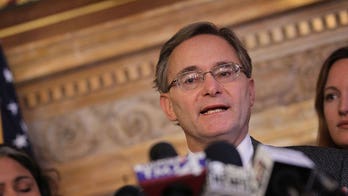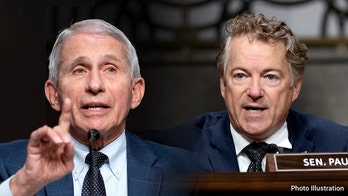Impact of interest rates and the role of the Federal Reserve
Bret Baier calculates 'The Cost of Spending'
Whenever then-Republican presidential candidate Ron Paul would rail against the Federal Reserve on the stump, he got big applause from growing crowds.
"We don't have the money -- they run out of borrowing power, guess what they do? You would have never guessed. They start printing money! And of course that leads to more problems," Paul said at a campaign stop in March in Fargo, N.D.
But despite Paul's and others' criticism, the Fed has acted even more aggressively. Just last week it doubled down on previous commitments to keep buying billions of government treasuries -- printing more money each month -- to keep interest rates low for the foreseeable future.
"Exceptionally low levels for the federal funds rate are likely to be warranted at least through mid-2015," Federal Reserve Chairman Ben Bernanke said.
The move, economists warn, could have dangerous consequences. So why are they doing it?
First, take a look at the national debt, now well past $16.3 trillion.
Compared with the U.S. economy, the debt-to-GDP ratio is now almost at 102 percent -- the highest since just after World War II. And that's with extremely and historically low interest rates.
Even at these rates, that interest will cost the U.S. more and more every year -- $222 billion in interest payments on the debt this year, and $570 billion by 2022, just at current rates.
Imagine what could happen if rates rise.
"I mean this stuff is no joke -- so we have this big interest in keeping these interest payments low and also incidentally in also keeping interest payments low so that other parts of the economy can continue to function, or function as well as they can under the vaguely recessionary circumstances," Arthur Brooks, with the American Enterprise Institute, told Fox News.
Because for decades, the country and economy have essentially put whatever they can on the credit card -- and every sector has done it -- now that credit market debt is way out of proportion with the economy.
The broader credit-market-debt-to-GDP ratio has steadily increased over the decades to 370 percent in 2010. It ticked down slightly to 350 percent in 2012.
This covers everything from housing to government to the financial industry.
Back in the '50s and '60s, there wasn't a lot of borrowing. But then the country started getting leveraged and the debt mountain started to grow. Economists say the country is now so over-leveraged that if interest rates rise even slightly, all of these sectors may have a hard time paying the bills.
"Servicing the debt is hard now," former Democratic Sen. Evan Bayh said. "This is with interest rates at record lows - God forbid something should happen to cause interest rates to go up even a little, back to where they ordinarily would be, the burden of this debt would become immensely greater."
Economist John Taylor said that if the interest rate were to rise, say, from 2 to 4 percent, "it really doubles the amount that you have to pay on a given amount of debt and when the debt's so high, that's a lot of money."
Economist Robert Genetski said the spiral from an increase in interest rates would be "very difficult to contain."
"That's why while we have the rates down while things are under control -- this is the time to implement more positive policies," he said.
The Federal Reserve, to further reduce long-term rates, since 2007 has amassed more than $2 trillion in government debt and mortgage-backed securities. It's now in the third round of what is called quantitative easing.
But Brooks warned that this kind of program could eventually fuel painful inflation.
"Right now it's not," he said. "And we're sort of counting on it never fueling inflation, but the truth of the matter is you look at history -- sooner or later, inflation is going to come around. And when inflation comes around, that really hits the American people very hard. ... It will be ordinary people, working people, poor people that are really gonna suffer when finally this inflation comes around.
"It's really playing with fire," he said.





